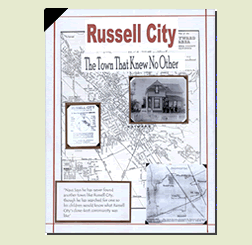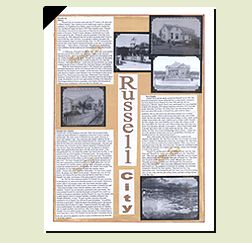





There were many differences between Hayward and Russell City. The population in Hayward, for example, was enormous compared to Russell City. Sam explains, "Hayward was like a big metropolitan area". Even though Russell City wasn't one of the best looking cities, it was a city with the most caring, honest, and hard-working citizens in the Bay Area.
Russell City's Demise
Russell City's living conditions were bad. There were no paved roads, simply dirt roads that paled in comparison to Hayward's nice looking paved roads. The sewer system in Russell City was awful. However, it wasn't the residents' fault. They were poor and couldn't afford to fix all their problems. It was all the cities around Russell City which didn't want to help out this little town with honest and hard-working people. Hayward was the closest city to Russell City but it had no intentions of helping Russell City recover.
Sam Nava said Russell City was "out there by itself and it didn't look good for Hayward, that's why they never got sewers," even though Russell City was ranked the number one slum in the East Bay. It was known to be one of the tragedies of Alameda County. The media had the worst portrayal of Russell City. The mayor of Hayward said, "The problems of the people there directly affect us and we have a moral responsibility to take it on." The mayor thought that Russell City had a bad reputation and hurt other communities around Russell City.
Nobody really knew the real way Russell City was and how well the whole community got along, except the residents themselves. For example, Mr. Ernesto Nava recalls "Era un pueblito ese muy buen pueblito, la gente muy honesta, toda la gente. Porque eran puros conocidos, todos, todos." (It was a town, a good little town, the people were honest, all the people—because they were all well known, all of them.)
Mr. Sam Nava also said that he would like to live in Russell City today, just because of the great people he remembers.
By 1963 the redevelopment program for Russell City gave up trying to develop the city and started relocating people to new homes. However, it wasn't right to move people, many who were honest, had a stable lifestyle, and really didn't want to move.
One resident of Russell City said "This is the best place in the world for children, Because cities are not for children." Russell City was basically a great place to raise your family. The cities around Russell City said that the people of Russell City weren't as healthy as the general population and that Russell City was a fire hazard and a safety hazard. However, George Feliciano, a resident of Russell City, thought differently. He said, he "grew up there, moved to Hayward, returned to live in Russell City with his eighty-three-year-old mother." He said they are both in great health "I think the doctor has probably been to the doctors more times than she has in eighty-three years."
People in Russell City really didn't have a health hazard. The redevelopment program moved all 205 families and 33 single residents. Most, however, didn't leave happy. Some people in Russell City were offered money to leave, but some of the residents' houses burnt down. So, by 1965 Russell City had become a wasteland with no life left, and all the happiness and the sounds of children playing down the block had vanished.
<-- back

